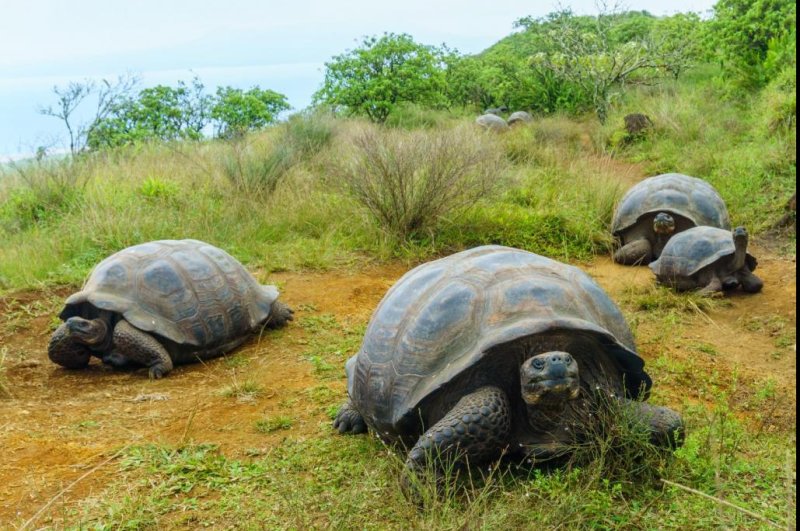The seed dispersal services of Galapagos giant tortoises are essential to many plants on the islands. Photo by Guillaume Bastille-Rousseau
April 22 (UPI) -- Generally speaking, Galapagos giant tortoises spend the islands' dry season on the volcanic slopes, where low-hanging clouds provide water for vegetation. During the wet season, the turtles typically return to the lush lowlands.
But when researchers tracked the migration patterns of Galapagos giant tortoises over several years, they found the reptiles' movements are weakly associated with local climate conditions.
Before their tracking efforts began, scientists assumed they would discover a shift in the timing of the tortoise's migration -- a shift matching changes in climate.
"Many animals, such as ungulates, can track current environmental conditions and migrate accordingly -- what researchers sometime refer to as surfing the green-wave," Guillaume Bastille-Rousseau, ecologist at the State University of New York, said in a news release.
At the study's outset, Bastille-Rousseau and his colleagues had three main goals.
"One was determining if tortoises adjust their timing of migration to current environmental conditions," Bastille-Rousseau said. "Two, if so, what clues do they use to adjust the timing, and, three, what are the energetic consequences of migration mis-timing for tortoises?"
The collected data showed the movements of Galapagos giant tortoises are only weakly associated with fog, rain and temperature. Prolonged periods of unusually dry conditions don't inspire the tortoises to move to higher ground earlier than usual.
The research -- published in the journal Ecology -- doesn't necessarily suggest tortoises are oblivious to their surroundings or changes in climate. But it does suggest scientists don't fully grasp the factors driving the reptiles' movement patterns.
"Tortoise timing of migration fluctuated a lot among years, often by over two months," Bastille-Rousseau said. "This indicates that migration for tortoises may not just be about foraging opportunities. For example, female tortoises have to make decisions related to nesting, and we still have a lot to learn about migration in giant tortoises."
The giant tortoises are important ecosystem engineers, clearing vegetation and dispersing seeds across the islands. As climate change continues, it's possible the timing of the tortoise's migration could become increasingly misaligned with optimal conditions.
"One concern is that at some point in the future, migration may not be an optimal strategy for tortoises," Bastille-Rousseau said. "There may be a reduction in the number of individuals doing these long-distance movements. This would likely have cascading consequences for the whole ecosystem."















